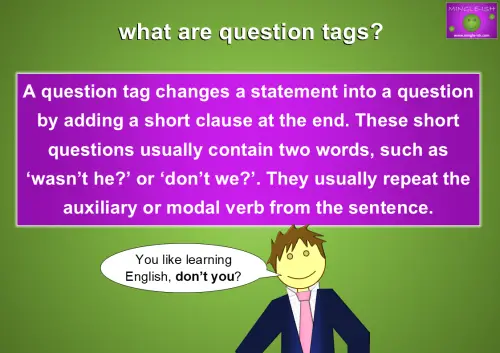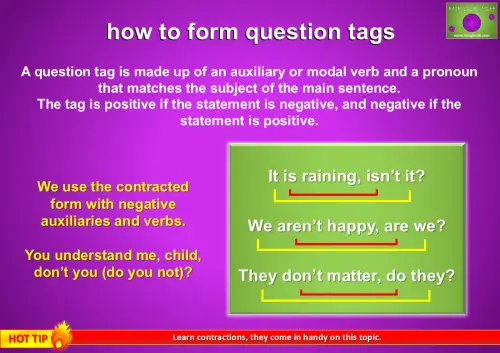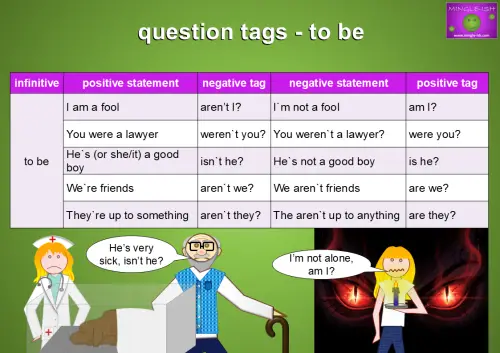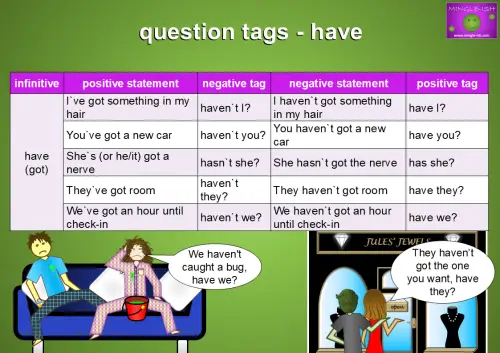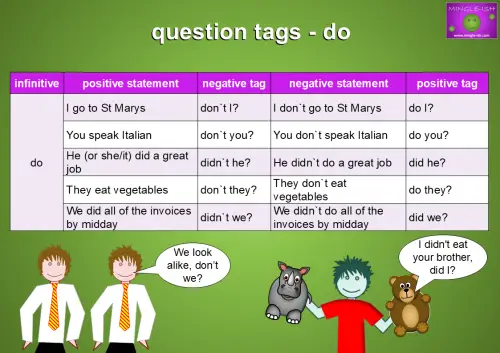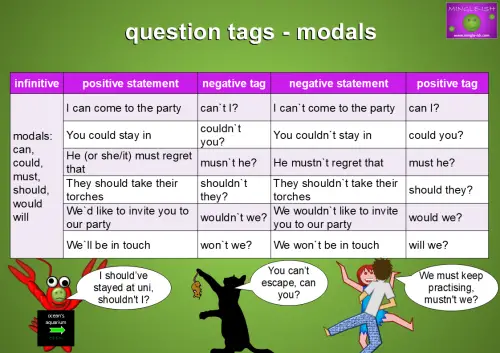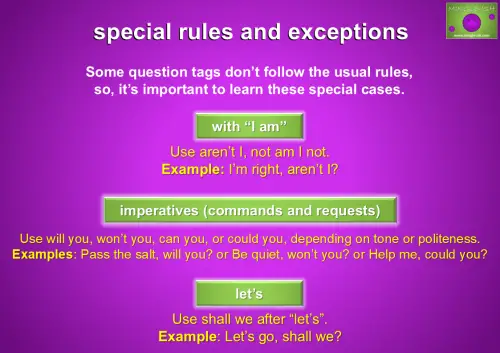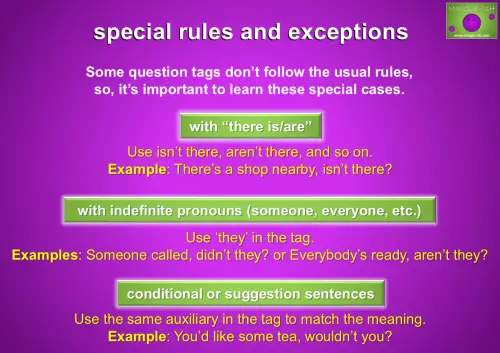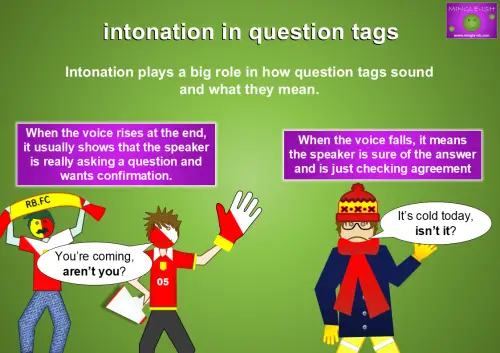Contents
Question tags are those short questions we add to the end of a sentence, like “You’re coming, aren’t you?” or “It’s cold, isn’t it?” They make English sound more natural and conversational. On this page, you’ll learn how to use question tags correctly, see useful examples, and practise with fun quizzes to boost your confidence in everyday English.
What Are Question Tags?
You want to know what a question tag is, don’t you? Well, read on! A question tag changes a statement into a question by adding a short clause at the end. These short questions usually contain two words, such as ‘wasn’t he?’ or ‘don’t we?’. Question tags require a response, so the listener must engage and answer accordingly. They usually repeat the auxiliary or modal verb from the sentence.
Here are some examples:
- You’re coming to the party, aren’t you?
- She doesn’t like coffee, does she?
- They’ve finished their homework, haven’t they?
- It was raining earlier, wasn’t it?
- You can swim, can’t you?
How to Form Question Tags
Forming question tags in English is simple once you know the pattern. A question tag is made up of an auxiliary or modal verb and a pronoun that matches the subject of the main sentence. The tag is positive if the statement is negative, and negative if the statement is positive.
For example:
- She’s coming, isn’t she?
- You don’t like coffee, do you?
- They can swim, can’t they?
If the main sentence doesn’t already have an auxiliary verb, we use do, does, or did to form the question tag.
For example:
- You work here, don’t you?
- He played football, didn’t he?
The key is to make sure the verb tense and pronoun in the tag match the main clause.
Common Auxiliary and Modal Verbs Used in Tags
When forming question tags, we usually use auxiliary and modal verbs from the main sentence. These small helper verbs make the tag match the tense and meaning of the statement. Here are some of the most common auxiliary and modal verbs you’ll see in question tags, along with examples to help you understand how they work.
